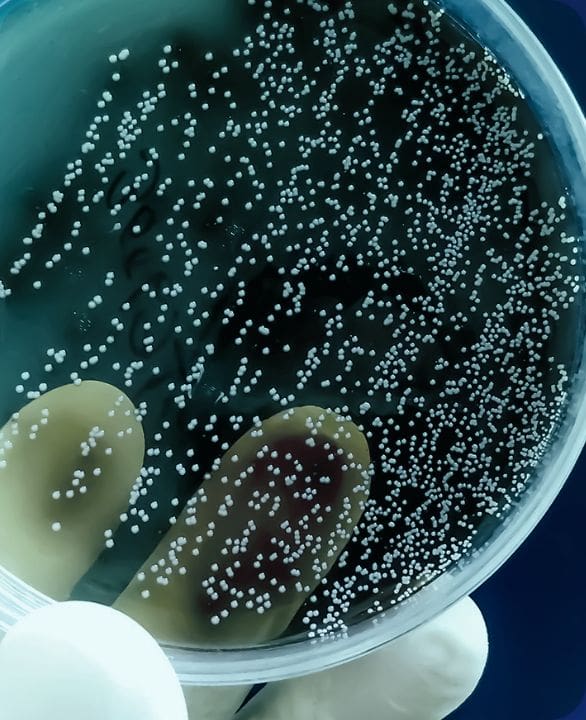Science
Uncovering a novel compound

A scientific breakthrough
Our lead candidate is the first antifungal to be granted orphan drug status from the European Medicines Agency, as well as orphan drug status and qualified infectious disease product (QIDP) designation from the FDA. Additionally, the FDA granted the candidate two Breakthrough Therapy Designations (BTD), a process designed to speed up the development and review of drugs for which preliminary clinical evidence indicates that they may demonstrate substantial improvement over currently available therapies.
BTD products are offered all Fast Track Designation features, as well as additional guidance and organisational commitment from the FDA. This designation means that we have a chance to deliver a novel class of therapeutics to patients who need other treatment options.
Our pipeline



Inhaled formulation
We also are leveraging our expertise in fungal molecular biology and biochemistry and our deep understanding of the orotomide class of antifungal agents that we discovered to identify and develop additional novel antifungal compounds.
*First antifungal agent to receive Breakthrough Therapy designation.
†Commercial rights partner exclusive to Europe and Asia.
Our focus
These infections are caused by a less common but highly resistant group of molds that includes the Lomentospora, Scedosporium, Scopulariopsis, and Rasamsonia species. These molds exhibit a pathophysiology similar to Aspergillus, presenting a significant challenge to both the diagnosis and treatment of patients and often cause life-threatening infections in immunocompromised patients.
- Hope WW, McEntee L, Livermore J, et al. Pharmacodynamics of the orotomides against Aspergillus fumigatus: new opportunities for treatment of multidrug-resistant fungal disease. mBio. 2017;8(4):e01157-17. doi:10.1128/mBio.01157-17
- White RM, Cech J, Ratanasirintrawoot S, et al. DHODH modulates transcriptional elongation in the neural crest and melanoma. Nature. 2011;471(7339):518-522. doi:10.1038/nature09882
- Mourad A, Perfect JR. Tolerability profile of the current antifungal armoury. J Antimicrob Chemother. 2018;73(suppl_1):i26-i32. doi:10.1093/jac/dkx446
- Bongomin F, Gago S, Oladele RO, Denning DW. Global and multi-national prevalence of fungal diseases-estimate precision. J Fungi (Basel). 2017;3(4):57. doi:10.3390/jof3040057
- Martínez JL. Short-sighted evolution of bacterial opportunistic pathogens with an environmental origin. Front Microbiol. 2014;5:239. doi:10.3389/fmicb.2014.00239
- Cadena J, Thompson GR III, Patterson TF. Aspergillosis: epidemiology, diagnosis, and treatment. Infect Dis Clin North Am. 2021;35(2):415-434. doi:10.1016/j.idc.2021.03.008
- WHO fungal priority pathogens list to guide research, development and public health action. Geneva: World Health Organization; 2022. Licence: CC BY-NC-SA 3.0 IGO.
- About valley fever (coccidioidomycosis). Centers for Disease Control and Prevention. https://www.cdc.gov/fungal/diseases/coccidioidomycosis/definition.html. Published November 12, 2020. Accessed January 30, 2023.
- Gorris ME, Treseder KK, Zender CS, Randerson JT. Expansion of coccidioidomycosis endemic regions in the United States in response to climate change. Geohealth. 2019;3(10):308-327. doi:10.1029/2019GH000209
- Jackson NR, Blair JE, Ampel NM. Central nervous system infections due to coccidioidomycosis. J Fungi (Basel). 2019;5(3):54. doi:10.3390/jof5030054